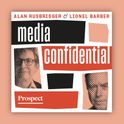The dividing line between memoir and autofiction can feel blurred, yet writers expect readers to treat the former as truth and the latter as anything between fact and fiction. Not so Mary McCarthy, the American writer best known for her 1963 novel The Group, which follows the lives of eight Vassar College graduates in the 1930s.
In Memories of a Catholic Girlhood (1957)—a collection of eight previously published autobiographical essays, now republished by Fitzcarraldo Editions as part of its Classics series, in which she seeks to unpick her tumultuous childhood—McCarthy, a literary star in her lifetime, admits her recollections may have been false. “There are several dubious points in this memoir,” she writes at the end of the first essay, proceeding to question her own narrative. She does this six more times; only the eighth and final essay, which she devotes to her maternal Jewish grandmother, escapes an additional introspection.
She also fights against the presumption that she has merely written “stories”. In an opening section addressed “to the reader”, she writes, “The assumption that I have ‘made them up’ is surprisingly prevalent, even among people who know me.” She adds, “Many a time, in the course of doing these memories, I have wished that I were writing fiction.”
This apparent contradiction lifts Memories out of the category of memoir and into something more like the work of Annie Ernaux, whose writing seeks to explore the truth of experience. Truth was a relative term to McCarthy, in any case. Born in Seattle in 1912, she lacked definitive facts about her early years: her parents, Roy and Therese, died in the great influenza pandemic of 1918, leaving their six-year-old daughter and her three younger brothers to be brought up in Minneapolis by their great-aunt Margaret and her “wicked” husband, Myers, who whipped all four children.
This broke the “chain of recollection—the collective memory of a family,” McCarthy writes in the book’s prologue: “It is our parents, normally, who not only teach us our family history but who set us straight on our own childhood recollections, telling us that this cannot have happened the way we think it did and that that, on the other hand, did occur, just as we remember it.”
Rather than “fiction, of strictly real events or facts”, which was how the French writer Serge Doubrovsky defined autofiction in 1977, McCarthy—who died aged 77, in 1989—sought to enshrine as fact memories she could not corroborate by capturing them on the page. “As orphans, my brother Kevin and I have a burning interest in our past, which we try to reconstruct together, like two amateur archaeologists, falling on any new scrap of evidence, trying to fit it in, questioning our relations, belabouring our own memories,” writes McCarthy, the “First Lady” of American letters, to quote Norman Mailer.
McCarthy balances descriptions of her great-uncle’s abuse with gratitude for an early exposure to religion
Those memories range from the brutal to the beautiful, McCarthy balancing descriptions of her great-uncle’s abuse with gratitude for an early exposure to religion. She describes how the words of the mass and the litanies and the old Latin hymns, the Easter lilies around the altar and the ornamented prayer books provided her “only aesthetic outlet”. An early religious zeal burns brightly—“I threw myself into it with ardour, this sensuous life”—before burning out like one of McCarthy’s cherished votive lamps. She became an atheist aged 12, first as a ploy to stand out at her convent school and win friends, and then because scepticism made more sense.
Her early faith played more than an artistic role. Looking back at what she liked about the church she recalled, “with gratitude, was the sense of mystery and wonder”. In other words, she learned, at an impressionable age, that not everything in life is clear-cut. The ways people delude themselves emerge as key themes in her novels. Kay Strong, the character in The Group most like McCarthy, fools herself into thinking her husband, Harald, might ever amount to something as a playwright, and Martha Sinnott, the main protagonist of A Charmed Life (1955), falsely imagines she can return to the same New England town where her ex-husband—based, in part, on McCarthy’s second husband, the writer Edmund Wilson—still lives and not meet with disaster.
McCarthy’s very early life divides into two phases. There were the “very gay” years on Puget Sound, in Washington state, when her father, a romancer who “insisted on turning everything into a treat”, would bring red roses home for her mother instead of dinner. This ended in 1918 after her parents caught influenza while moving back east to Minneapolis, where McCarthy’s parental grandparents lived. The details are blurry, but the outcome is stark: her parents died in her Catholic grandparents’ house. Although her grandfather had made a fortune in the grain industry, the bereaved children were brought up in penury by relatives with a “gift for turning everything sour and ugly”.
They were beaten, endlessly, “with the hairbrush across the bare legs for ordinary occasions and a razor strop across the bare bottom for special occasions”. “It was as though these ignorant people, at sea with four frightened children, had taken a Dickens novel—Oliver Twist, perhaps, or Nicholas Nickleby—for a navigation chart,” McCarthy writes in the second essay, which concludes with her eventual rescue, aged 11, by her mother’s father, Harold Preston, who was a prominent lawyer in Seattle. (Her three brothers remained in Minneapolis.)
The eventual trigger for McCarthy’s salvation was Preston noticing, on a rare visit to Minneapolis, that she was not wearing her glasses: she had broken them, falling in the school playground, and was being made to manage without them as punishment. “The rest of what we poured out to him he either did not believe or feared to think of, lest he have to deal with the problem of evil,” she writes.
By taking in only the girl and not her three younger brothers, McCarthy’s maternal grandparents seem to shirk what appears to be an obvious obligation. But the reason for this, which is revealed in the book’s final section, is as simple as it is moving: a combination of grief and delusion. “My mother had been my grandmother’s darling,” writes McCarthy. Her grandmother, Augusta Morganstern Preston, never recovered from losing her daughter. “Her grief had the character of an inveterate hostility,” adds McCarthy, by way of explaining the situation.
This book is a powerful testament to the human spirit’s capacity for reinvention
In an introduction to this new edition of Memories, Colm Tóibín writes that what McCarthy was doing, in fact, “was creating herself and then further reimagining the self she had so skilfully established”. He adds: “She became in her narrative, as she was becoming in her life, hard to pin down. It was not merely her protean personality or her remarkable intelligence that made her book so original, but the fact also that her background was, even in America, strange and new. Her Protestant antecedents hardly made any difference. What singled her out, however, was the mixture of Jewish and Irish and the added sense of money and entitlement.”
Read on its own, this book is a powerful testament to the human spirit’s capacity for reinvention. McCarthy’s direct style, confessional in tone, has the feel of a friend whispering secrets into your ear. The prose is wry and colourful and never less than captivating, whether the reader is wincing at her aunt’s cruelties or shuddering at McCarthy’s teenage misadventures, such as when she swaps the “shut doors and silence” of her grandparents’ home for two weeks of freedom with school friends in Medicine Springs, a small town in the middle of nowhere in Montana. (“The trip to Montana left no outward scars. Indeed, it was educational, in that I could not bear the taste of whisky for years afterward; even now I cannot take it straight—I gag.”)
Read alongside McCarthy’s other work, which includes several volumes of criticism, essays and journalism (she reported from North and South Vietnam), Memories adds welcome flesh to the autobiographical scaffolding of her eight novels. Far from detracting from her final text, McCarthy’s critique of her own material enhances the published version. It also explains her frustration with the critical reaction to The Group, which despite its immense success was dismissed by critics as a “lady-book” on its release for its relentless focus on the intimate minutiae of her protagonists’ lives. Every book “should be published with instructions on how to read it,” McCarthy once declared. Memories suggests she may be right.












